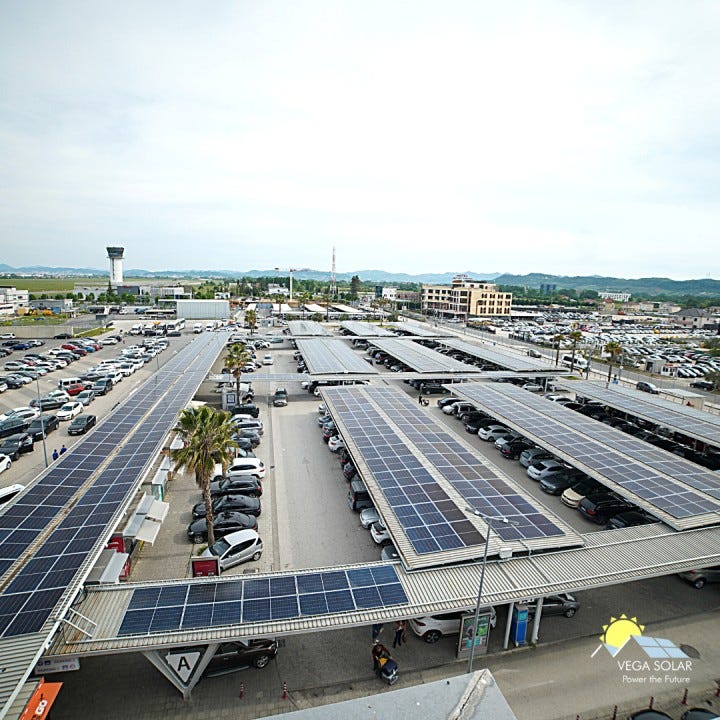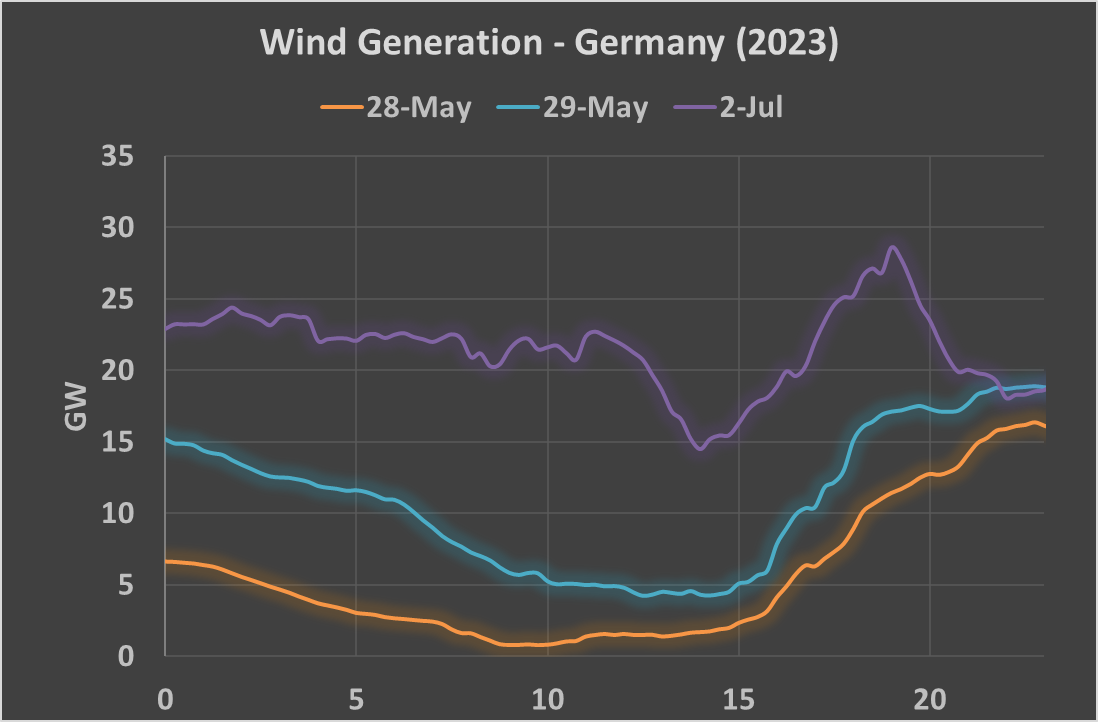On incentives for rooftop and utility-scale solar
Somes considerations on the difference between rooftop solar and utility-scale solar with a focus on incentives.
I have discussed in previous posts quite extensively solar energy, yet I have neglected to clearly differentiate between its various categories. Surprisingly, European statistics1 seldom delineate between small-scale rooftop solar setups and utility-scale solar plants.
Despite sharing the same underlying technology, there exist fundamental disparities between a modest rooftop installation and a utility-scale solar project, particularly in their influence on market dynamics and prices. Nevertheless, in a world with an increasing amount of solar, we will need both to have the proper incentives to react to market prices.
Let’s explore.
From rooftop solar to utility-scale
While the fundamental unit, the solar module, remains the same, there exists a significant contrast between the two scenarios depicted. On one hand, we have a facility capable of generating power equivalent to traditional power plants during sunny hours, while on the other hand, it's a small-scale installation integrated into the distribution grid.
In between these two extremes, there are also projects ranging from a few hundred kW to several MW located on commercial or industrial premises.

The disparities are multifaceted, spanning across various domains such as ownership structures, project scales, implementation strategies, and more. Additionally, the types of companies engaged in these endeavors differ significantly.
However, when it comes to market dynamics, two factors stand out as crucial: incentives and controllability. In situations where there's an excess of energy within the system, managing this surplus becomes imperative. In theory, negative prices should not occur for renewable energy sources, given their marginal costs are highly unlikely to be negative. To prevent such occurrences, it is essential to have appropriate incentives in place and the capability to control the operation of these plants effectively.
Rooftop solar
The predominant challenge associated with rooftop solar is the lack or minimal presence of incentives to respond to market fluctuations. Within this context, two primary support schemes stand out: net metering and feed-in tariffs.
Under a net metering scheme, only the energy itself is accounted for. This means that any kWh generated and fed into the grid can be reclaimed and utilized at a later time. Essentially, the grid serves as an infinite and perfectly efficient battery. While this support mechanism is still prevalent in various countries, it's gradually being phased out. In some cases, grid operators may levy a grid fee to offset the cost of this service2. However, the introduction of such fees does not alter the incentive structure regarding injecting energy into the grid when market prices are zero or negative.
A more effective support scheme is a feed-in tariff, where any electricity injected into the grid and not used locally is compensated. This approach is notably the primary support mechanism in Germany. Various tariff structures exist, contingent upon factors such as the installation's connection date and size. However, they all share the characteristic of offering a fixed price irrespective of market conditions. This system offers a slight improvement over others, as it encourages local consumption by ensuring that the price for consumed electricity typically exceeds the feed-in tariff rate. However, during periods of abundant sunlight, traditional rooftop solar installations in Western Europe are prone to injecting substantial amounts of electricity into the grid.3.
Large-scale solar
Broadly, large-scale solar projects are better positioned to respond to market price fluctuations. However, there is room for additional consideration to encourage them to optimize value over sheer production, such as through the implementation of financial Contracts-for-Difference (CfD).
Moreover, it's crucial to acknowledge that there are still instances where incentives are misaligned, with certain solar plants receiving support even during periods of negative prices4.
Examples around the world
Let's take concrete examples that illustrate how solar responds—or fails to respond—to market price signals.
Germany
In 2023, there were three instances in Germany where energy prices plummeted below -100 €/MWh: May 28th, May 29th, and July 2nd. Examining the graph below, which depicts both the prices and solar generation in Germany on those days, it becomes apparent that there was minimal to no response to these exceptionally low prices from solar.
If we look at wind generation, we see a reaction to these negative prices, as it seems that generation was lower during the day than when prices were very negative.
South Australia
South Australia represents one zone within the Australian power system and stands as a frontrunner in terms of renewable energy integration. Notably, statistics distinguish between two types of solar installations as previously described: utility-scale solar (dark yellow) and rooftop solar (light yellow). Upon examining the graph below, it becomes evident that while utility-scale solar experiences curtailment, rooftop solar remains largely unaffected, maintaining a relatively normal generation profile.

A last word
The fundamental component of solar energy remains consistent whether it's a small rooftop installation or a GW-scale solar park. However, their integration into the electricity system varies significantly. In theory, managing one large installation should be simpler than overseeing thousands of smaller ones. With appropriate incentives, such as financial CfD or the cessation of support during periods of negative prices, these larger solar plants should have the capacity to self-curtail for economic reasons, akin to the practices observed in South Australia.
Regarding rooftop solar, several barriers exist. Firstly, many countries still have support mechanisms in place that compensate rooftop solar owners regardless of market conditions, even during periods of significantly negative prices. While this issue might seem minor at present, considering the rapid pace of solar installations and the lengthy durations of such support schemes (some lasting up to 15 years), this could potentially become increasingly problematic in the future.
Secondly, the widespread adoption of smart meters and dynamic tariffs is crucial, with injection prices that accurately reflect market conditions. This approach would not only encourage the uptake of home batteries but also incentivize better energy consumption patterns, such as the charging of electric vehicles during situations of energy surplus.
Thirdly, adjustments to network tariffs and taxes could be made to promote greater involvement from households in providing the required flexibility, including with their solar systems.
Finally, as emphasized in earlier posts5, our aim should be to maximize the value of solar energy, and not the total production. Therefore, we should ensure that support schemes do not inadvertently undermine this objective, both for utility-scale solar and rooftop solar.
With improved incentives and support schemes, the solar energy market could witness the emergence of innovative business ideas. For instance, one creative approach could involve orienting solar panels vertically along an East/West axis to enhance the capture rate of solar energy6. But if I am paid a fixed price for injecting, why would I do that?
This includes ENTSO-e statistics, unfortunately.
This is the case for example in Wallonia where there is a fixed fee per kW installed for the privilege of using a net metering scheme (valid until 2030 for the installations done before 2024).
Air conditioning is much lower than in other places in the world such as California for example. In addition, the current home battery system can generally only store less than 2 hours of solar production, making any battery quickly saturated.
For example, some renewables still receive support if negative prices are less than 6 consecutive hours. See here.
See for example: the imperfect LCOE.





